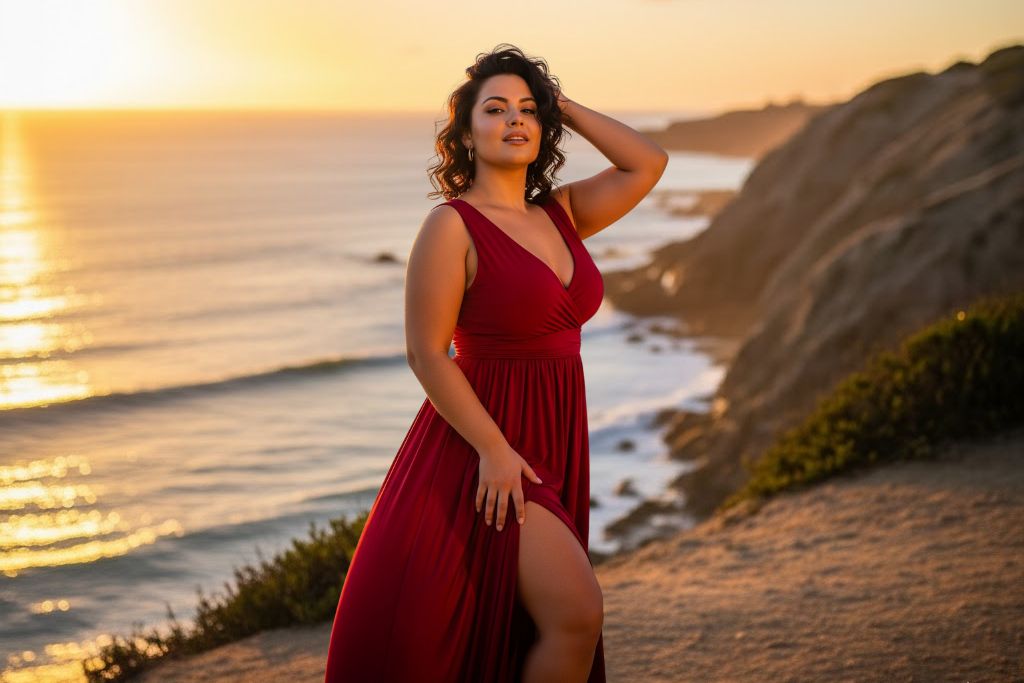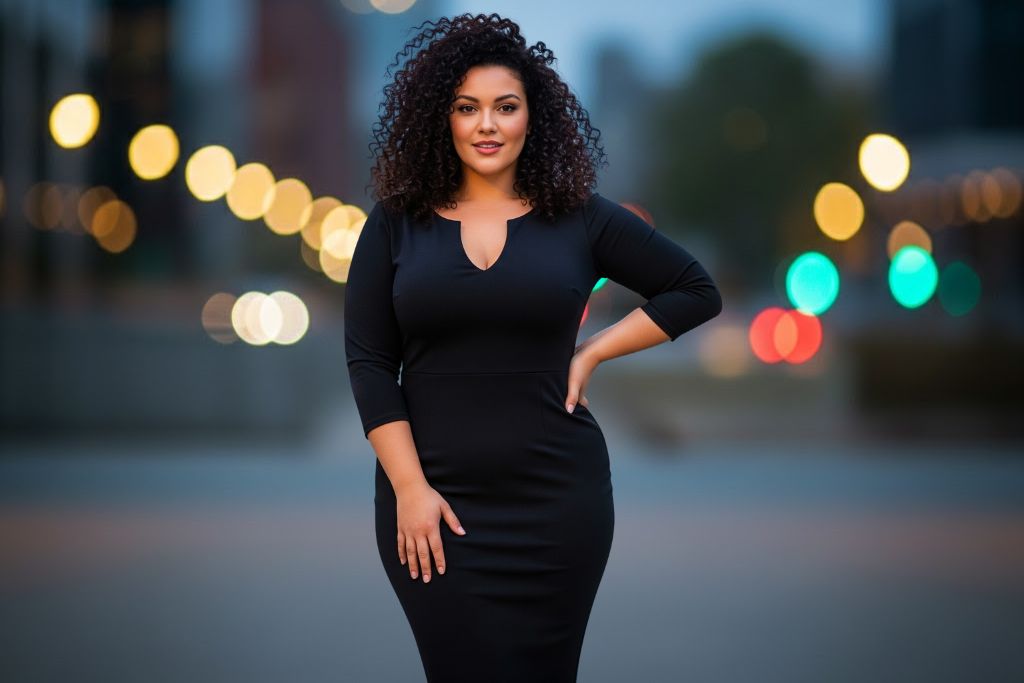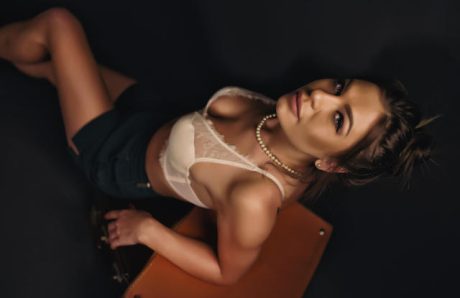
In the world of adult content, every keyword is a gateway to a specific pleasure niche. Thus, two terms, “curvy” and “plus size”, are frequently and wrongly interchanged, leading to confusion and, all too often, fruitless searches. Indeed, this semantic ambiguity goes beyond a simple choice of vocabulary. It directly influences the efficiency with which consumers find the content they want and, more importantly, how content creators position and monetize themselves.
In other words, this distinction directs consumer desire either towards a specific body shape, or towards an overall size. Understanding the differences between these terms is therefore essential to promoting body positivity and inclusivity in fashion. In this article, we will dissect the realities of morphology (curvy) and size (plus size) and analyze their most sought-after intersection.
Curvy: a celebration of shape and proportion
Generally speaking, the term “curvy” refers to a morphology with pronounced curves, particularly in the hips and chest, and a slimmer waistline. In practical terms, it’s an hourglass figure, regardless of the person’s overall weight. A curvy person can wear standard sizes and still have this distinct silhouette. Also, this vocabulary is often associated with iconic fashion and film figures such as Sofia Vergara, who boast voluptuous yet harmonious forms.
The fundamental indicator is the waist-to-hip ratio. The lower the ratio, the greater the contrast and the more curvy the person. It’s important to understand that “curvy” is independent of clothing size. A woman wearing a size 38 can be considered curvy if her waist is very defined in relation to her hips. Similarly, a woman wearing a size 50 may well embody the curvy archetype if she maintains a pronounced hourglass ratio. It’s the silhouette that counts, not the total volume.

Idealization in adult content
In adult content, this archetype is idealized. The appeal of the curvy body lies in the dynamic visual aspect and the erotic tension created by the alternation between finesse and opulence. This silhouette is historically associated with fertility and the archetypal “ideal body” with curves, capturing a desire focused on accentuating the female form.
Plus size: a criterion of size, not shape
Unlike “curvy”, the term “plus size” is first and foremost a clothing size indicator. It is used in the fashion industry to designate garments that exceed the size standards considered regular or “normal”, generally starting at French size 44 (or 12 to 14 US). It is therefore a purely quantitative category based on chest, waist and hip circumference. In fact, it encompasses a much broader spectrum of morphologies, regardless of the distribution of curves. A larger person can be H-shaped, A-shaped or O-shaped.
Note that a person can be plus-size without being curvy, and vice-versa. A plus-size woman can have a loosely defined silhouette, where fat is evenly distributed, without the pronounced contrast of a slim waist and generous hips. Consequently, the use of this keyword targets an audience specifically looking for plus-size models, whatever their morphological proportion.
Crossing concepts: when “curvy” and “plus size” meet
Confusion between “curvy” and “plus size” is common, as many curvy women are also plus sized. The most popular and sought-after meeting point is the woman who possesses both hourglass proportions (curvy) and a large clothing size (plus size). This is the famous “Curvy Plus Size”: the contrast of a pronounced waist coupled with generous body volume.
To fully understand the distinction, we need to consider three cases.
- Curvy only: a size 38 woman with a very slim waist and wide hips. She’s not plus size, but she’s perfectly curvy.
- Plus Size only: a size 48 woman with an H-shape, i.e. a uniform distribution of volume with no marked waist definition. She’s plus size, but not curvy.
- Both (The Sweet Spot): a size 48 woman with a very low waist-to-hip ratio. This is the target market for Curvy Plus Size.
Unfortunately, the term “curvy” is frequently misused. It is often used as a euphemism by certain designers or platforms to designate all plus sizes, in order to avoid the term “plus size”, perceived as less valorizing. This abusive substitution fuels confusion and obscures the true meaning of curvy, which is a celebration of proportions, not weight or absolute size.

The spectrum of desire: how are preferences articulated around curvy and plus size?
The distinction between these terms is fundamental, as it reveals different psychological intentions on the part of the content consumer. The “curvy” preference is generally an aesthetic fixation on specific morphology: attraction is driven by the contrast between a pronounced waist and full hips. The fantasy here is focused on the ideal hourglass shape and proportion, irrespective of the person’s overall weight.
Conversely, the “Plus Size” preference is often focused on overall body volume, the idea of mass and corpulence, irrespective of height definition. The attraction is for a certain body type, sometimes touching on specific fetishes such as the cult of size or BBWs.
It is essential for the reader to understand this nuance in order to express desire. A “Curvy” preference is an attraction to a proportion ratio; a “Plus Size” preference is an attraction to a template. The evolution of tastes on the market reflects this growing demand for specificity, enabling users to find precisely the intersection that matches their fantasy.
Why preferences differ: psychology and aesthetics
Preferences for “curvy” or “plus-size” silhouettes are not the fruit of chance, but are rooted in psychology and culturally-influenced aesthetic standards. For many people, the fascination with curvy figures is due to perceived ideal proportions. Indeed, this preference, while often associated with a personal aesthetic, can sometimes be confused with a fetish for voluptuous forms. For many consumers and designers, this is an important point of distinction.
Nevertheless, the preference for plus size as a whole is more in line with a “body positive” movement. It’s about highlighting all body shapes without limiting oneself to specific proportions. Studies and surveys carried out by YouGov show a wide diversity of preferences.
This reflects a shift in mentality towards self-acceptance and the representation of all body shapes. This change is having an impact on the way brands communicate. Brands that target larger people emphasize comfort, diversity and inclusivity, while those that emphasize the curvy figure focus on aesthetics and highlighting curves.
Towards a better understanding of desires and morphologies
Ultimately, the distinction between “curvy” and “plus size” is more than just a semantic nuance; it’s fundamental to understanding the subtleties of aesthetic preferences and morphologies. While “curvy” celebrates hourglass proportions and harmonious shapes, “plus size” refers to dress size and overall body volume.
While these two concepts frequently intersect in what we have termed the “sweet spot”, their differentiation is crucial to accurately articulating consumer desire and promoting a more accurate and inclusive representation of bodies. The content market, by adapting to this demand for specificity, bears witness to an evolution in mentalities where recognition of the diversity of shapes and sizes is becoming an imperative, not only to satisfy fantasies, but also to enhance the value of all beauties.







